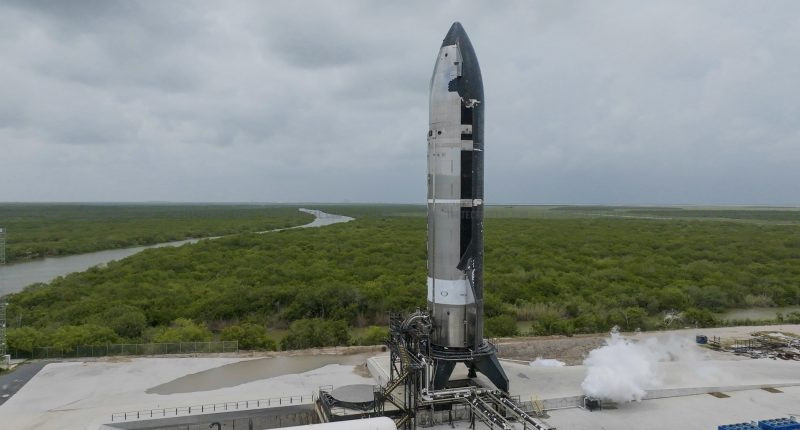SpaceX has canceled the planned tenth test flight of its colossal Starship megarocket, citing an unspecific problem with its ground systems just minutes before the scheduled launch from Starbase in southern Texas. The scrub, announced by the company on X, occurred nearly 15 minutes before the liftoff window, halting the final fueling sequence for the Starship upper stage, adding the latest setback to a program critical to both NASA’s lunar ambitions and Elon Musk’s vision of colonizing Mars.
“Standing down from today’s tenth flight of Starship to allow time to troubleshoot an issue with ground systems,” SpaceX announced in its post on X. The mounting technical difficulties place considerable pressure on SpaceX, which holds a fixed-price contract with NASA to develop Starship as the lunar lander for the Artemis program, aiming to return American astronauts to the moon within the next few years (the launch of Artemis II is scheduled to be held in April 2026).
This development follows a string of high-profile failures that have plagued the vehicle throughout the year. This year alone saw all three previous Starship upper stage test flights ended in fiery destruction, with two resulting in debris raining down over the Atlantic Ocean and the third being intentionally terminated after reaching space. Adding to the setbacks, another Starship upper stage was destroyed on the ground in June during a “static fire” engine test at the Starbase.
The scrubbed Flight 10 was arguably the most complex and critical mission to date, designed to aggressively test key components necessary for Starship’s eventual, fully reusable configuration. While the previous three flights had attempted the challenging ‘chopstick’ catch of the Super Heavy booster back at the launch tower (a feat successfully achieved on three other occasions) this latest mission will not be attempting the same. SpaceX did not elaborate on what the issue with the ground systems is, so it could be anything at the fueling infrastructure, cryogenic storage, valves, pressurization systems, electrical connections, or others.
The Starship upper stage had multiple objectives. The primary goal was to achieve a controlled, suborbital flight culminating in a targeted splashdown in the Indian Ocean, marking a necessary step toward demonstrating the rapid reusability required for low-cost operations. In addition to this, the flight was scheduled to perform a relight of a single Raptor engine in space and deploy eight dummy Starlink satellites, a milestone that would have been beneficial for the future of SpaceX’s satellite internet constellation. Furthermore, the re0entry profile was modified to intentionally stress the structural limits of the upper stage’s rear flaps, while testing experimental heat shield tiles and the structural performance of the vehicle’s catch fittings.
Despite the cancellation, the company has backup launch days, suggesting a new attempt could be made within the next 48 hours, assuming the ground system issue is resolved quickly. Nonetheless, the development process continues to be an expensive undertaking for the company – while the exact cost of each unit is proprietary, estimates suggest Starship hardware losses in recent years exceed half a billion dollars, though Musk and the company continue to focus on their rapid iterative development “fail fast, learn fast” model.
The Tech Portal is published by Blue Box Media Private Limited. Our investors have no influence over our reporting. Read our full Ownership and Funding Disclosure →






